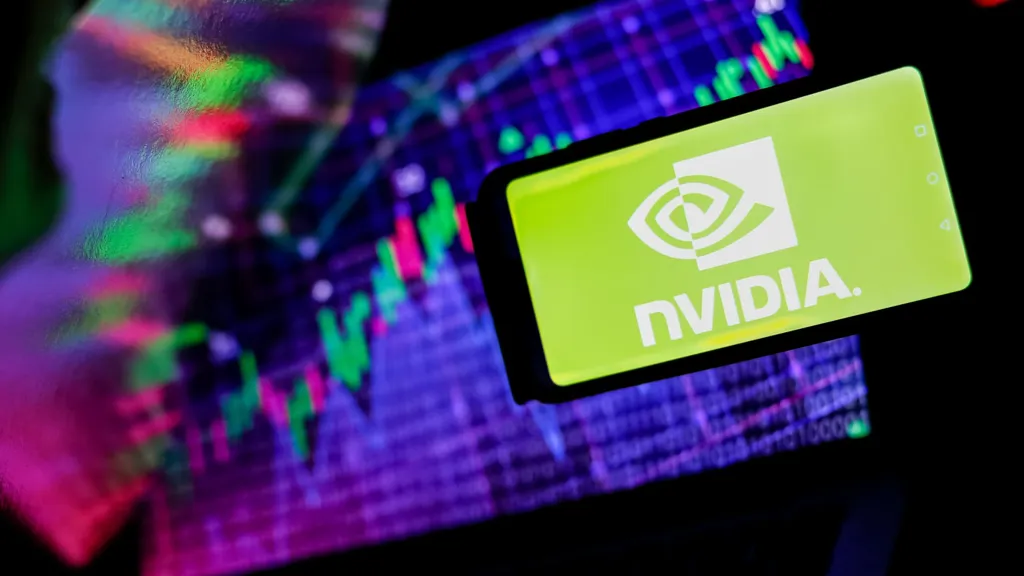Yes, you read that headline right. There's something unique happening between two of the largest exchange-traded funds tracking U.S. semiconductor stocks: One fund is sharply underperforming the other, despite several recent years of relatively in-line performance. The VanEck Semiconductor ETF (SMH) is up about 42% in 2024, while the iShares Semiconductor ETF (SOXX) has lagged with a gain of 15%. That gap of more than 26 percentage points is the largest going back more than a decade, according to a CNBC analysis.
The massive disparity in performance matters because it means the VanEck ETF is tracking for larger gains than both the broad S & P 500 and technology-heavy Nasdaq Composite. The iShares fund, on the other hand, is poised to underperform both of the major indexes despite its coverage of a sector that has been heralded for big advances and a connection to artificial intelligence.
This bifurcation first became apparent in 2023 when the VanEck fund outperformed the iShares ETF by nearly 7 percentage points. Going back more than a decade, the funds always performed within a few percentage points of each other and saw variation in which came out on top. Now, as this gap has ballooned well into double digits, some retail investors may be left scratching their heads on the differences between two of the most-popular funds tracking the same sector.
The key reason can be found through evaluating how each ETF weighs AI titan Nvidia, according to Roxanna Islam, head of sector and industry research at financial data firm VettaFi. "They're pretty similar on the surface," Islam said. "Why is SMH doing so much better than SOXX? I mean, the answer is Nvidia."
A weighting game
Islam noted that the iShares and VanEck products are the two largest ETFs in the space. The similarities don't stop there. Both track indexes focused on the same industry and each uses market cap-weighted technology. Each also has a fee of 0.35%. But there are several major differences. The VanEck SMH ETF tracks the 25 largest U.S. semiconductor stocks, while the iShares SOXX fund follows 30. The former also allocates much larger weightings for its biggest names than the latter, according to Islam.
That deviation in weighting affects broader performance when there are stocks such as Nvidia. The megacap tech leader and retail investor favorite has surged more than 175% this year, making it the top performer in the Dow Jones Industrial Average and the third-biggest gainer in the S & P 500 during that period. Due to this, funds that have greater exposure to Nvidia would benefit more from its advance. That is what happened in this case. While Nvidia makes up nearly 20% of the VanEck SMH fund, it accounts for less than 8% of the iShares SOXX, according to Morningstar.
In other words, "It does come down to that one is more top-heavy over the other," Islam said.
Within the SOXX ETF, Nvidia isn't even the largest holding. The stock has a smaller weighting than Broadcom despite its relative outperformance this year, Morningstar data shows.
An anomaly or a new normal?
Looking beyond this year's performance gap, Islam said there are pros for each fund that investors should consider. VanEck's SMH ETF is larger and more liquid, she said. On the other hand, the iShares SOXX ETF has more holdings and has an average-weighted market cap that is a lot smaller, so it can offer more diversified exposure to the sector. SOXX was also launched around a decade earlier, Islam said, giving it a first-mover advantage.
Despite 2024's divergence, both are within the top 5% of technology funds when looking at the trailing 10-year return, according to Morningstar.
Islam doesn't expect such a large gap between the two funds in 2025. She also cautioned investors against abandoning the iShares product after this year's run. While VanEck's SMH fund has benefited from another strong year for Nvidia shares, she pointed out that its high concentration in a few names can also come with risk. In this vein, she noted that Nvidia's performance has started to cool compared with that of other names in the sector. The stock is down nearly 1% in December, while both ETFs are up on the month.
"Some people say: Why not just buy Nvidia? Why even buy the ETF if it's so focused on a single stock?," Islam said of the SMH ETF. "Nvidia is doing well this year. But what if it comes down next year?"
